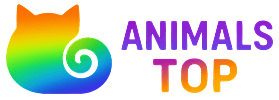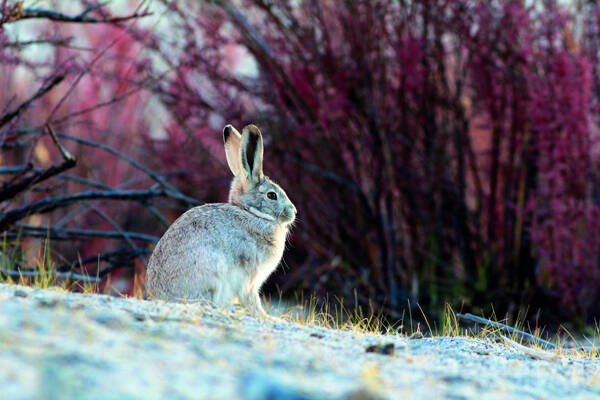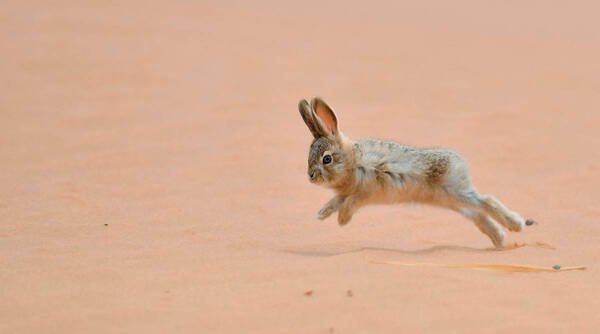Ochotona iliensis
IUCN
LCBasic Information
Scientific classification
- name:Ochotona iliensis
- Scientific Name:Ili pika, Teddy pika
- Outline:Lagoiformes
- Family:Lagomorpha Ochotonidae Ochotona
Vital signs
- length:160-200mm
- Weight:240g
- lifetime:5-8year
Feature
It looks like both a rabbit and a mouse and is a species unique to my country. Among the only 24 species of the genus Pika recognized internationally, this one has the largest ears, the longest hind legs and the largest body.
Distribution and Habitat
It is endemic to China. It is only distributed in the Tianshan Mountains in Xinjiang, including the bare rock areas above 2800m in the South Tianshan Mountains and the North Tianshan Mountains.
The Ili pika lives in various grasslands, mountain forest edges and bare cliffs. It is a high-altitude animal, mainly living in the bare rock areas of the Tianshan Mountains at an altitude of 2850-4100 meters. The actual habitat only accounts for 17.05% of the distribution area. These areas are covered with snow most of the year, and plants are particularly scarce. The conditions of their habitat and food base are very poor, especially in winter.
Appearance
The Ili pika looks like a rabbit and a mouse, and is relatively large. The average body length is over 200mm. The hind feet are 42-43mm. The ears are also relatively large, 36-37mm. There are three bright rust-brown spots on the forehead, top and sides of the neck. The forehead is flat, and the width between the orbits is 5.3mm; it is 11% larger than the length of the skull base. The total length of the skull is 45-48mm. The fur color varies in different seasons. The back of the body is light yellow in winter and gray in summer. The ears are hairy, with obvious reddish-brown hair on the edge of the ears. The ears are not as round as other species. The face is also hairy, especially the area near the ears, where the hair is long and dense. There is thick yellow hair on the bottom of the hind feet. On the skull, the incisor foramen and the palatine foramen are merged into a large hole, and there is no oval foramen on the frontal bone.
Details
The Ili pika is a very endangered and rare species. It was discovered very late and was published as a new species by Li Weidong and Ma Yong in 1986. Due to its rarity and naive appearance, it is loved by people and has received strong attention from the scientific community. It is called the Chinese Teddy pika. According to Li Weidong's research, the distribution area of the Ili pika is limited to the Tianshan Mountain area in Xinjiang, my country, and is mainly divided into two parts: one is the distribution area in the northern Tianshan Mountains, with an area of about 13,500 square meters; the other is located in the southern Tianshan Mountains, with an area of about 5,800 square meters. Within the distribution area, this species is divided into various hilltops in the high-altitude area of the Tianshan Mountains, showing a typical island-like distribution. Steep mountains, rock crevices, and caves are its main shelters. Due to its special living habits, under the conditions of drastic climate change, the population has continued to decline and tends to be extinct. Therefore, it is a species worthy of high attention and protection.
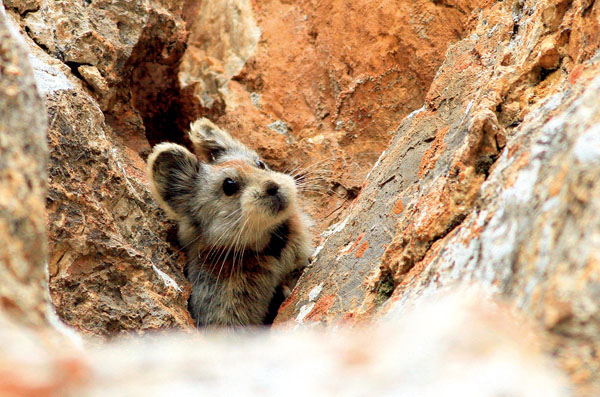
The Ili pika only exists in Xinjiang, China, and is a group in the plateau ecosystem. They mainly live in the bare rock area of the Tianshan Mountains between 2,800 and 4,100 meters above sea level. Since 2000, the habitat of the Ili pika has been reduced to 17.05% of its original distribution area. The actual number of mature individuals in the population is less than 2,500, which is already endangered. China has listed it as an endangered animal.
The Ili pika is accustomed to living in groups. It digs holes or lives in groups in natural rock crevices. It is active during the day, often screaming and running in short jumps. It does not hibernate, but has the habit of storing food. When winter comes, it relies on the stored food to survive the winter. It is a herbivorous animal, mostly feeding on alpine plants such as nasturtium, saxifrage, and snow lotus. Since these plants mostly grow in the cracks of rock walls or small terraces at high altitudes, the Ili pika often goes hungry. The Ili pika also has many natural enemies, including stoats, stone martens, foxes, and various birds of prey.
The breeding season is from April to September (or extended to October), and 1-3 litters are produced each year, with 2-11 pups per litter. The young are late-maturing, naked, without fur, and have unopened eyes, and cannot live independently.
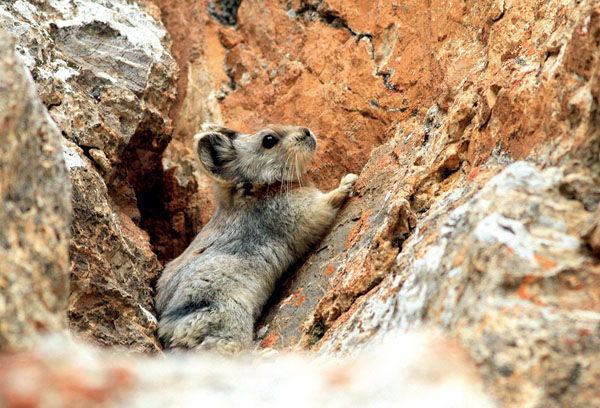
Although the Ili pika is a newly discovered animal, it is actually a very ancient relic species. Some people believe that the pika evolved from the running rabbit in the late Miocene. What is worrying is that this cute little animal with an elf-like shape has sharply decreased in number due to the combined effects of various modern factors. The overall population has decreased by more than 64.48%, and the habitat area is also gradually decreasing. Researchers found that the population of the Ili pika has decreased by more than 55% in the more than ten years since 2000. The number of mature individuals in its population is less than 2,500, and the number of mature individuals in its subpopulation does not exceed 250, which is already endangered. This may be caused by extremely harsh living conditions, inbreeding, natural enemies and human interference.
The species was accidentally discovered by Chinese scientists in the Tianshan Mountains in 1983 and was determined to be a new species. In the 1990s, scientists counted its number and estimated that there were about 2,000. Then, the pika disappeared from people's sight.
In August 2022, the Ili pika protection volunteer team photographed the endangered species of Ili pika while carrying out protection and monitoring work for the Ili pika in the Jipke Mountain area of Jinghe County in the Tianshan Mountains.
